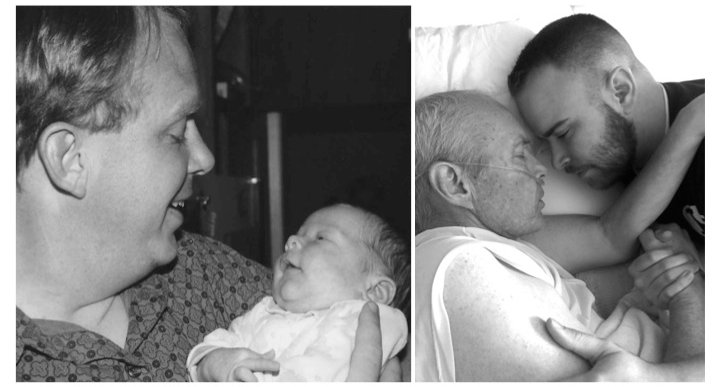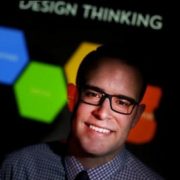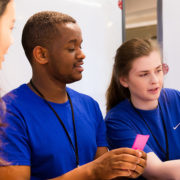The Transformative Power of Empathy
Tanner Wheadon — a University Innovation Fellow from Utah Valley University and now at Purple, Inc. — shares his very personal story about love, loss and empathy.

by Tanner Wheadon
Originally published on LinkedIn
I truly have the greatest job in the world. As an innovation consultant, I get to spend each day learning about people from all walks of life and design solutions for their problems. Through my involvement in the University Innovation Fellows Program, I’ve had the opportunity to teach human-centered design to people from all over the world. Over and over again, I have taught about the importance of empathy in human-centered design. When I teach about empathy, there are three overarching aspects I touch on:
- Observation: Observing people and their behavior in the context of their lives
- Interviewing: Interacting with the people you are designing for
- Immersing in empathy: Experiencing what your user experiences
Of the three, immersing in empathy is the most critical aspect of the design thinking process. Taking on the perspective of another allows us to see the world with a fresh set of eyes and obtain insights that lead to innovation. I’ve always considered myself a caring person and felt that empathizing with others came naturally to me. However, as I focused on sharpening my skills in observation and interviewing, I lost sight of the most important part of ethnographic research: developing empathy for the people you are designing for.
What is Empathy?
Empathy, as described by Brené Brown, is when a person is in a deep hole and we get down in the hole with them to better understand how they are feeling. Sympathy is when we observe a person in a deep hole and say, “Oh yeah, it looks bad down there”, yet we are unwilling to get down in the hole with them. Based on this description, I learned that my interactions with customers were becoming sympathy-based, not empathy-based. I was observing and interviewing my users as if they were animals in a cage and inferring assumptions about their lives, yet I was unwilling to get in the cage with them.
I recently became fascinated by the research methods of Masao Kawai, a Japanese primatologist in the 1960’s who introduced a form of research called kyokan. The word kyokan means ‘feel-one’. It is a subjective and empathetic form of research in which the researcher immerses themselves in the environment of the primate to create feelings of mutual relationship, attachment, and shared experience. The focus becomes less about observing a primate from afar and more about immersing the researcher in their environment, interacting with them, and learning about them in the context of their lives.
Observation and interviewing alone yield surface-level insights. Empathy is the key to unlocking the attitudes and beliefs behind what people say and do. When these underlying insights are missing, we tend to make assumptions and fill in gaps we don’t understand using knowledge we’ve gained from our own experiences, not the experiences of the people we are designing for. Another issue is that we tend to establish the roles of interviewer and interviewee, which doesn’t build rapport with the people we are trying to better understand.
In the article Empathy: The Softer Side of Design, Maureen Carroll writes, “The best ethnographic researchers become like conductors who fade into the background as the music takes center stage, or dancing duos who are so in sync you cannot tell which partner is leading. Letting go of the need to lead opens up a plethora of possibilities for what you can learn.” In order to understand and better design solutions for customers, we must feel at-one with them and embrace the complexities of their environments.
Embrace all of it
Six months ago, I awoke in the night to find my father experiencing pain in his stomach. We drove to the hospital where we learned that he had Stage IV Pancreatic Cancer. I was devastated. My father and I have always had a very close relationship and it was hard to comprehend the inevitable future tied to this diagnosis.
When my father was first diagnosed, I received some advice from one of my mentors, Carine Clark. Carine, who survived Stage III Ovarian Cancer herself, took the time to offer me guidance through this trial. In my correspondence with Carine about the challenge I was facing, she wrote, “Just make sure you embrace all of it.”
I thought to myself, “All of it?”
And her letter repeated, “All of it. You will learn things that you wouldn’t ever trade.” I took Carine’s advice and did my best to embrace all of it. I determined that I would be there for my dad every step of the way; through both good and difficult times. I went with my father to appointments, I sat with him through chemotherapy, I was with him every time we heard more bad news, and I held his hand as he passed away in my arms.
Embracing every moment with my father allowed us to develop a deeper connection than we had ever felt before. I found a sense of awareness and care for another that was beyond any level of love I had ever experienced. Together, my father and I began to see the world with a fresh set of eyes. Things that used to be important to us, weren’t anymore. Things we took for granted, suddenly became beautiful and meaningful.
The outlook on life I gained from stepping into his (limited time) shoes made me wonder how many learning opportunities I had missed in life because I didn’t make an effort to feel with another. Luckily, our ability to empathize with others is not fixed. We can make a conscious effort each day to step into the shoes of another and experience what they experience.
Experience it firsthand
Throughout my father’s illness, I was working on a project through IDEO U in which I was tasked with developing products for the modern day 70 year-old. Although my father wasn’t 70 years old, his 59 year-old body experienced accelerated aging due to his cancer, strokes, and chemotherapy.
Over the course of one day, my father would lose his ability to complete a task that he was able to complete that same morning. Because of these drastic changes, the problems he faced with strength, dexterity, and mobility became clearly apparent to me. I found that as I worked with the elderly, I developed greater empathy for them because I was experiencing similar challenges associated with poor health at home.
In addition to interviewing and observing the elderly, I also created empathy experiences to get down in the hole with them to better understand the challenges they faced on a daily basis. I would spend a whole day in a wheelchair, with a walker, lifting limited weight, or limiting my dexterity and trying to complete daily tasks. By experiencing firsthand what users experience, we create a personal and emotional connection with them.
Although it is impossible to reach a state of complete empathy with another, that doesn’t mean we shouldn’t try. Through these experiences, I learned things about the elderly that were unexpected and profound. Although I was able to gain great insights as I designed products for the elderly, my greatest takeaway from this experience has been the transformative power of empathy. I have seen this transformation in myself and learned things that I will never trade.
Break the pattern
As we continually design the future, we must ensure that we don’t fall back into patterns of sympathy from project to project. Each person we design for has their own unique backgrounds, behaviors, and beliefs. We must make a constant effort to put ourselves in situations where we can feel with and learn from the people we are designing for. These deep and meaningful connections will not only help us become better designers, but will help us find meaning and purpose in our lives.
Immerse yourself in empathy, get down in the hole with the people you are designing for, create meaningful connections, and make sure you embrace all of it. All of it.
 About the author:
About the author:
Tanner Wheadon is a University Innovation Fellow from the Spring 2015 cohort at Utah Valley University, where he worked on his Masters in Business Administration. While a student at Utah Valley University, Tanner created a mobile prototyping cart to test out concept for a makerspace. Tanner is currently a Dream Team Lead at Purple, Inc.






Leave a Reply
Want to join the discussion?Feel free to contribute!